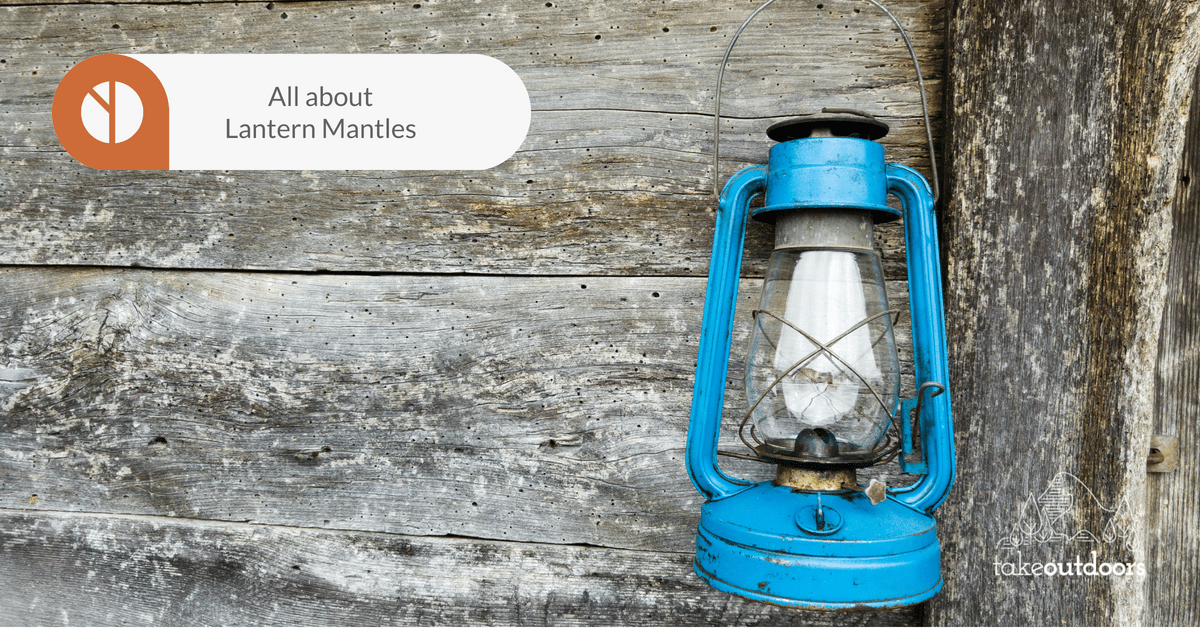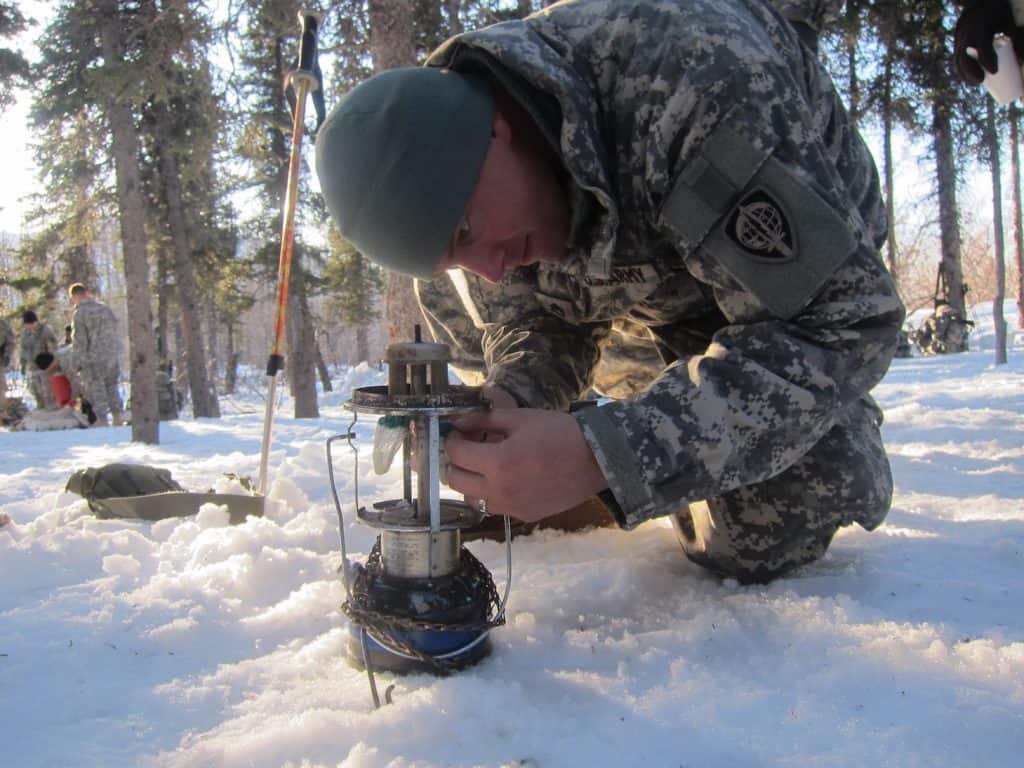We use affiliate links and may receive a small commission on purchases.
Read more about us.
These days, the outdoor world is replete with new-fangled, cutting-edge gadgets and goods designed to maximize our time in the outdoors. From pinpoint accurate GPS devices to ultralight, high-performing threads, the R&D departments of the big brands have just about covered it all.
For some of us, however, one old-school technology is still holding its own and fending off the wave of competition from the new kids on the block: the lantern mantle.
In this article, we’re going to take you through all the ins and outs of the lantern mantle, starting off with a few insights into its utility and how it compares to other light sources before delving into the nitty-gritty of how they’re used and addressing any health and safety concerns of would-be users.
What is a Lantern Mantle?
In a nutshell, a lantern mantle is a device used to generate bright white light when heated by a flame. Browse any sepia-toned snaps of the campsites of mountain-goers of yore, and you’re sure to see one.
In the camping world, this all-time favorite of backcountry traditionalists is now making something of a comeback thanks to a growing number of budding revivalists who have discovered its undoubted utility as a low-cost, low-maintenance, and highly potent bringer-of-light.
You’re probably wondering:
What’s the difference between a “lantern mantle” and a “mantle”?
Well, the lingo is often confusing. The term “lantern mantle” is used fairly indiscriminately online to refer to both the lantern which sits on top of the fuel source (usually a gas canister) and the “mantle” itself, which is in fact the fabric sock or bulb which is placed inside the lamp and produces the lantern’s bright white light when burned.
For our purposes, we will use the term to refer to both pieces of equipment used in unison.
Do I Need One?
Anyone who spends a lot of nights out in the wild or car camping could benefit from adding a lantern mantle to their kit. While more modern equivalents such as headlamps or battery-powered flashlights do essentially the same job, those plumping for lantern mantles do so on account of a number of highly desirable benefits, which you’ll find in the review below.
Types of Lantern and Which is Best
Lighting options for your campsite come in many forms, each with their own benefits and drawbacks. Within the category of lanterns alone, moreover, there are three main types:
- fuel-burning lanterns
- battery-powered lanterns
- candle lanterns
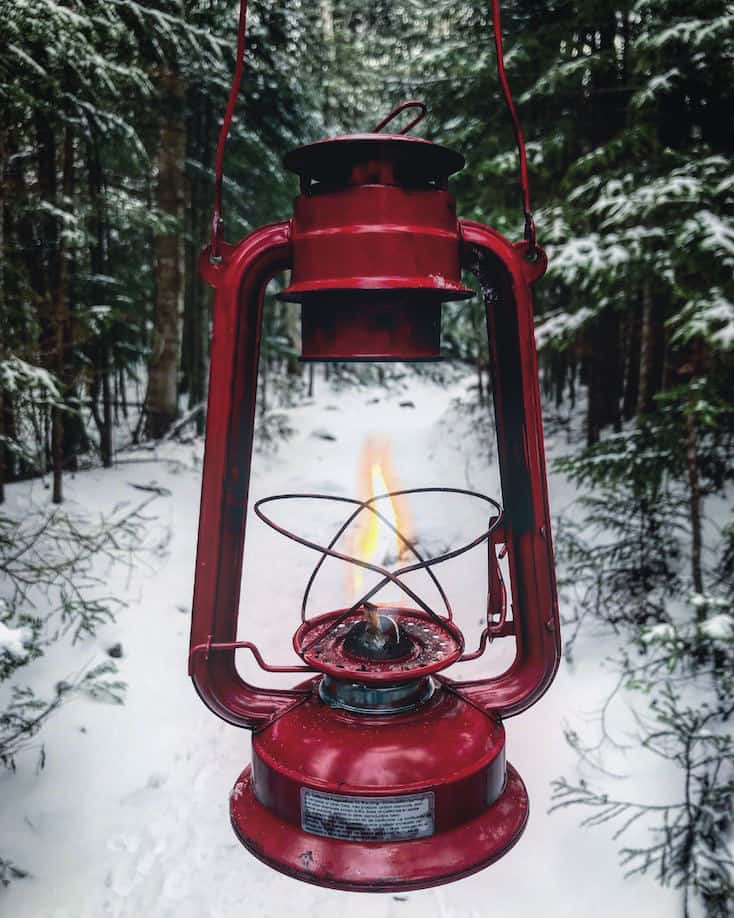
Fuel-Burning Lantern Mantles
Traditional fuel-burning lantern mantles can be can be powered by one of three main fuel types: liquid fuel, propane, or butane. These fuel sources are used in conjunction with either clip or tie-on mantle socks (sometimes called “bulbs”), which are affixed directly to the lantern’s nozzle.
Most lantern mantles have a glass or steel mesh surround to reduce the risk of burning and/or fire.
- In most cases boast far superior lumens output to either battery-powered or candle lanterns
- Fuel-efficient
- Easier to gauge remaining fuel supply (unlike with batteries)
- Soft light and that cozy, old-school feel
- Ideal for car-camping, where weight isn’t an issue
- The fact that they look, quite frankly, very cool and can earn any user major kudos among camping companions!
- Can’t be used in confined or enclosed spaces — adequate ventilation required
- Not the most portable or lightweight option
- Quite noisy
- Potential fire or burn hazard
- Heavy
- Gas in butane-powered systems can condense in cold conditions and subsequently fail to burn (not ideal for those eager to get their hands on their morning coffee!)

Battery-Powered, Electric Lanterns
Battery-powered lanterns are simple, relatively lightweight and, thanks to advances in LED technologies, offer decent light output and competitive running time.
- Easy to use
- Silent
- Flameless: absence of fire or burn risk
- Less breakable than glass-covered lanterns
- Duration: long battery life
- “Unnatural” (and often harsh) light
- May require a hefty supply of spare batteries, particularly on multi-day camping trips
- Battery weight and disposal
- Usually offer fewer lumens than fuel-burning lanterns
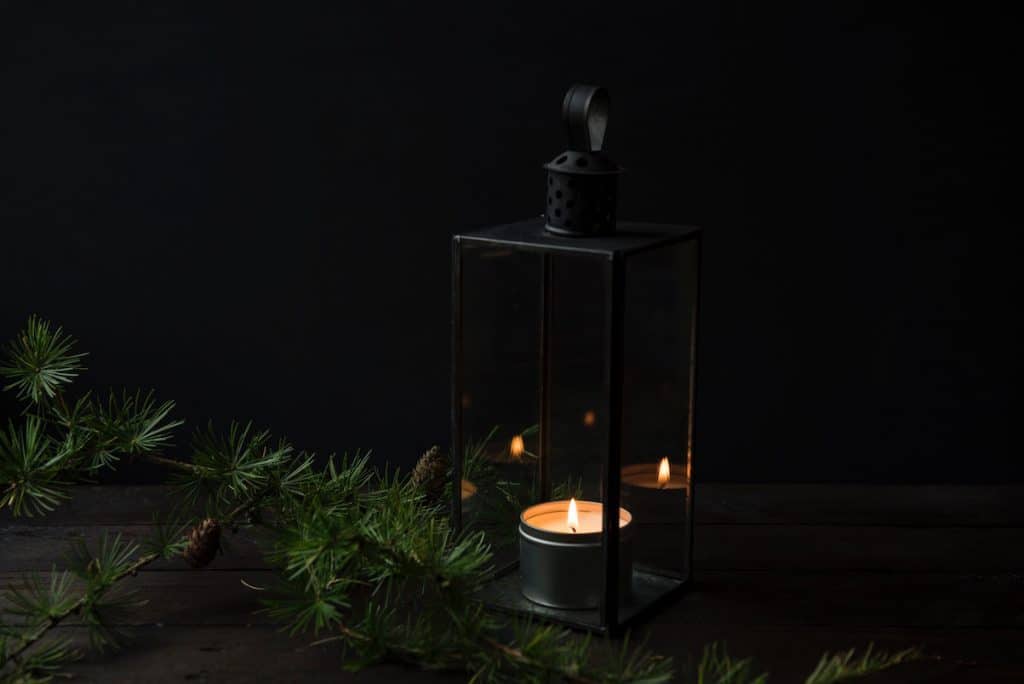
Candle Lanterns
Candle lanterns use one or more candles to provide soft, natural light. As with many lantern mantles, they are usually used with a glass casing to minimize the risks posed by a naked flame and optional reflectors can be added to enhance their otherwise limited light output.
- Cheap!
- Silent
- Very soft, natural light
- Silver lining: light output so weak that it probably won’t obstruct your view of the stars!
- Fire and burn hazard
- Very (very) limited light output (circa 12.5 lumens without reflectors)
Fuel-Burning Vs. Electronic Lanterns Vs. Candle Lanterns:
Which is Best?
Different scenarios call for different lighting solutions, and each of us has our own personal tastes and quirks when it comes to how we do things when out getting our hike on. As such, there is no right or wrong way to illuminate your tent or campsite, just a variety of options whose utility will ultimately come down to which is more efficient or suitable to your needs and preferences.
Some factors worth considering before choosing the light source to take along on your adventures include the following:
Group Size
Those who have camped in large groups will know the frustrations caused by multiple headlamps’ focused glares flashing into your eyes one moment and then leaving you in almost complete darkness the next.
Due to their powerful and dispersed output, lantern mantles offer a more group-friendly light source which can help to avoid the above hassles (and perhaps also avert the odd campsite squabble) and a convenient solution for those sharing a communal camping area.
By placing the lantern at the center of this area, you can provide sufficient light for everyone and also do so in a way that limits any risk posed to your kids, such as placing a small ring of rocks around the lantern or placing it on a tree stump or table, where it will be out of reach.
“But what if I’m a solo camper?” you may ask.
For solo campers, a lantern mantle may prove to be overkill unless you really aren’t a fan of the dark or are especially keen on the idea of being spotted by passing satellites(!).
A candle lantern is certainly an option for solo campers, but is a less practical and convenient choice than a standard headlamp — unless, of course, you have romantic visions of scribbling poetry under your candle’s gently flickering flame!
Weight and Space Restrictions
Traditional lantern mantle socks or bulbs in themselves are very lightweight and compact. Even if you are headed into the wild for a week or more, carrying one mantle for each night of your trip won’t weigh you down with more than a solitary ounce or two.
But:
- The lantern itself may weight anywhere between two and five pounds.
- Your fuel source (usually gas canisters) may add another four or five pounds on top of that… yikes!
While the temptation may be to think that you’re taking gas along to cook with in any case (and thus needn’t worry about the additional weight required for lighting) it’s worth remembering that there will be very little left to cook with if you are running your lantern on the same canister/supply!
The bottom line:
For thru-trekkers or those who are simply painstaking gram-counters when it comes to camping gear, more weight-friendly light sources such as a headlamp may well be the most attractive and suitable option. If, however, you are car-camping, pitching your tent a short distance from the trailhead, or just happen to prefer a lavish supply of light, then a weightier fuel-burning lantern becomes more feasible and a justifiable luxury.
Group Type
If camping alone or in a group of adults, then the risks posed by using either a fuel-fed lantern mantle or a candle lantern become minimal. Making your group aware of the lantern’s fuel source should be enough to have them tread carefully and avoid any inadvertent mishaps.
Should you happen to be camping with kids, however, your choice of light source may require a touch more consideration for two reasons:
Reason #1: There’s an open flame (well, nearly open — the presence of the glass casing on most lanterns conceals the flame to a certain extent).
Reason #2: Even if your kids happen to be marvels of obedience and common sense, many parents may object to the presence of a fuel-burning light source for the sole reason that a naked flame in their vicinity will all but rule out the possibility of any peace of mind and leave them on edge until you turn in for the night (and for some even then the worry is sure to continue!).
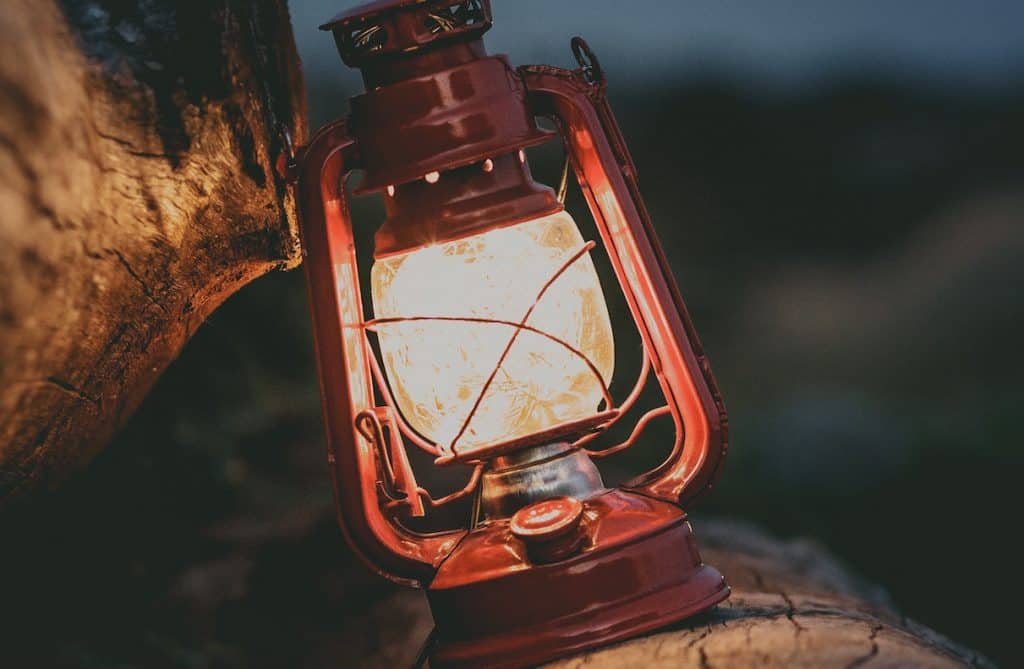
Burn Time/Running Time
‘Burn time’ refers to the duration of illumination provided by any given light source. For many campers, the prospect of having to change either the fuel type (i.e. batteries, gas, or liquid fuel) or the conduit (i.e. the bulb or mantle) can seriously detract from a lantern or lamp’s appeal.
Performance Comparison
The table below uses a middle-of-the-road example from each type of light source to give you an idea of how each performs in terms of cost, weight, burn time, and output.
| Type | Product | Weight | Burn Time | Output | Notes |
|---|---|---|---|---|---|
| Headlamp | Black Diamond Spot | 3.2 oz | 2.9 hours | 300 lumens | Weak light when set on “wide” or “flood” mode |
| Mantle Sock | Coleman Instaclip Mantle Sock | Negligible: roughly 1 oz for 4 | 12 – 14 hours | Depends on lantern | Would-be buyers need to factor in cost, weight, and burn time of gas fuel and added expense of the lantern itself (see below) |
| Fuel-burning Lantern | Coleman Deluxe PerfectFlow Lantern | 3.30 lbs | 7 hours on one 16.4 oz tank of propane | Up to 967 lumens on high setting | Additional weight and financial outlay required for fuel and mantle bulbs/socks |
| Battery-powered Lantern | Coleman Quad LED Lantern | 6.15 lbs (with batteries) | Up to 75 hours | 190 lumens | Requires 8 heavy D-cell batteries |
| Candle Lantern | UCO Original Collapsible Candle Lantern | 8.8 oz (with candle) | Up to 9 hours with one UCO candle | Not supplied by manufacturer, but circa 12.5 lumens | Additional purchase of candles required |
| Flashlight | JS Tactical V1-Pro Flashlight | 2.29 oz | 2 hours on a single AA battery | 300 lumens | High mode beam too narrow to illuminate wider spaces |
Which Size/Output do I Need?
Which size of lantern or how powerful an output you need will ultimately depend on three factors:
- your group size
- the size of the area you wish to illuminate
- the duration of your trip
While it may seem intuitive to believe the size of your tent may be a contributing factor, it’s worth noting that even the largest of tents can be adequately lit with even the smallest of mantles*.
Lantern mantles come into their own in group camping sites where a larger area needs to be lit. In this case, a larger lantern — used in conjunction with a larger canister — will provide far more illumination than your average headlamp, torch, or even battery-powered lantern.
With regard to duration, most mid-range lanterns (with a max output in the 500 lumens range) will run on a single 7 oz canister of butane for around 4-6 hours (slightly less for propane).
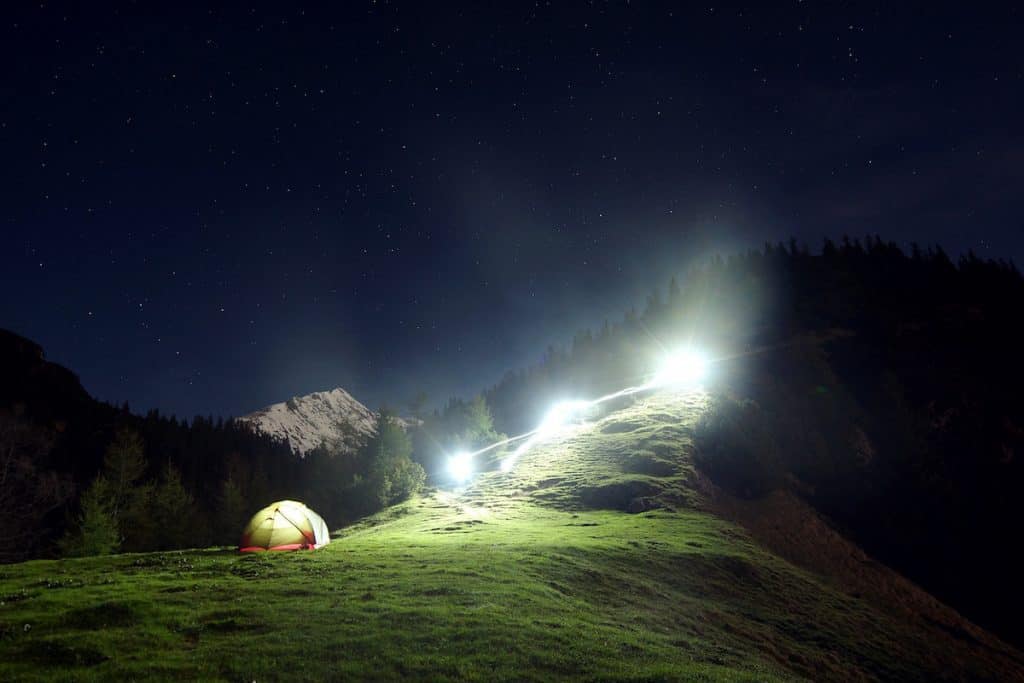
All About the Lumens
A lumen is a unit of measurement that indicates the visible light output of a light source.
According to Penn State College of Earth and Mineral Sciences, a simple equation can be used to determine a light source’s output or, rather, the number of lumens required to light any given space:
Foot-candles (fc) = Total Lumens (lm) ÷ Area in Square Feet
But wait:
What the heck, you might ask, is a “footcandle” (or “foot-candle”)?
According to sciencing.com
Back to our equations…
Given the above, we can easily determine the quality or strength of that light at the illuminated object using varying lumens outputs.
To give an example:
500 lumens of light ÷ 100 ft2 = 5.00 lumens per ft2 or 5.00 fc
Given that roughly 5 footcandles are required for “simple orientation”, we can calculate that the following outputs will deliver roughly the following square footage of adequate light, i.e. enough to perform the majority of basic campsite tasks:
- 100 lumens — 12.5 square feet
- 200 lumens — 25 square feet
- 500 lumens — 50 square feet
- 750 lumens — 75 square feet
If doing Maths hurts your brain, no worries, just tell us your tent size and we will recommend the number of lumens you need:
How to Replace a Mantle
Many would-be lantern mantle users are put off by the assumed trickiness of installing the mantle sock or bulb. This needn’t be so — installing or replacing this fairly flimsy-seeming little accessory is just as easy as replacing the batteries in a torch or electronic lantern once you’ve got the knack. Below, we’ve included a simple, step-by-step guide to how it’s done:
- First off, buy the right shape and size of mantle for your lantern — very few frustrations compare to pitching up in the dark middle in the of nowhere only to discover you’re proposed light source is all but useless.
- When you see your mantle is broken, torn or burnt out, remove it carefully when cool by cutting or unclipping the attachment, first making sure that the fuel source is turned off.
- Clip or tie your new mantle onto your lantern’s nozzle, cutting off excess string if you are using a tie-on mantle.
- Give the material at the bottom of the mantle sock a gentle tug to open up the fabric until it has a bulb-like shape.
- Before igniting your lantern, take a long match or lighter and burn the mantle until has shrunk into a white ash bulb around half of its original size. Warning: do not undertake this step in an enclosed space as the burnt bulb/sock will smolder and give off fumes.
- Return the glass cover (and lid, if you have one) to your lantern, taking particular care not to touch the now very fragile mantle sock/bulb.
- Turn on the fuel source at low output.
- Light the lantern with a long match or push-button ignition if you have one.
- Enjoy!
What are the Most Popular Brands for Lantern Mantles?
At present, camping brands Coleman and Campingaz have something of a monopoly over the fuel-burning lantern market, although Swedish brand Primus also produce a range of very popular, reliable, and well-made products.
Although many cheaper and/or unbranded options exist, due to the potential health hazards entailed in lantern use we’d highly recommend opting for a certified, “tried and tested” brand.
In short: if it’s got flames coming out of it, it’s best to buy the best you can buy!
What are the Best Lantern Mantles Out There in 2020?
As mentioned above, the ideal lantern for your outdoor adventures will depend largely on your own preferences and needs. Are you a solo camper or group camper? Will you be using it on multi-day treks or only single overnighters where weight is not an issue? Do you balk at the idea of having a naked flame in your living and sleeping area?
If you choose to go down the fuel-burning path for your lighting needs, the decision-making process is simplified by differentiating between size, weight, output, and overall convenience.
In a nutshell:
Smaller lanterns will offer fewer lumens but also consume less fuel (and thus prove lighter and cheaper over the long run).
Larger lanterns will be greedy on the gas but offer a higher lumens output that might just save you carrying additional light sources if camping in a large group.
Below, we’ve selected our top picks currently available for both small and large groups to help you decide which lantern will be best for you.
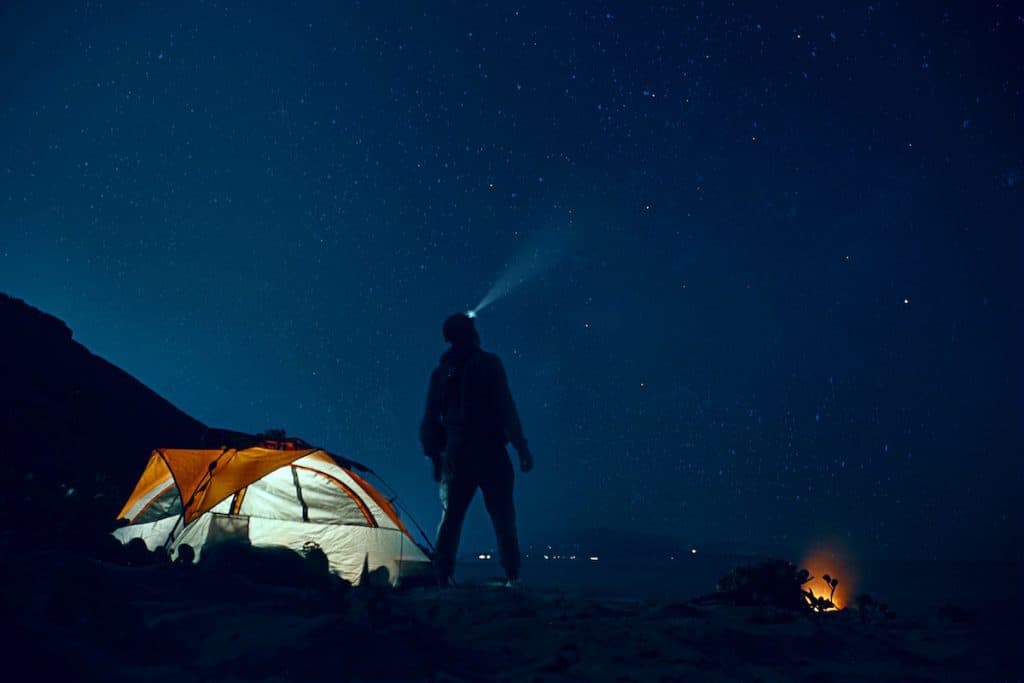

Small Group Lanterns
As the name suggests, the Campingaz 206L Lantern offers a very respectable output of 206 lumens, which should just about be enough to light a communal area of 25 or so square feet between tents. It also weighs in at a reasonable 16 oz and features a broad attachable base for extra stability, a steel surround on the glass casing to avoid breakage, a power regulator switch, and all-in-all offers great value for money.
The Primus Micron Lantern is another solid option that ticks all the boxes for both solo campers and groups. This rugged little lantern uses an EasyTrigger ignition system that simplifies lighting in all conditions, weighs a tiny 4 ounces and can flood your campsite with up to 360 lumens on a high setting.
Where the Micron differs from the other small-group lanterns is that it uses a tough steel mesh casing which is more likely to withstand the rough and tumble of long-distance backpacking than glass models. Burn time is also very high — roughly 8 hours on a medium setting with a 7 oz butane canister.


Large Group Lanterns
Illuminating large areas or communal spaces is always a tricky proposition for those camping in large groups.
The flitting beams of multiple headlamps can create a curiously strobe-like effect and often result in disgruntled companions when blinded by their harsh glare. Power-wise, headlamps also rarely offer enough “oomph” to illuminate large spaces when on flood or wide setting.
Battery-powered lanterns usually go one of two ways: either they fail to provide enough light due to a lower lumens output or, owing to their unnatural light, make you feel like you’re about to be interrogated by the KGB, neither of which tend to feature high on most campers’ tick list of desirable qualities.
Enter the Coleman Premium Dual Fuel Lantern, which is almost a dead-cert to provide the solution to your problems. Offering up to 700 lumens on its “high” setting (output can be regulated) and running on Coleman Liquid Fuel or unleaded gasoline in conjunction with two Coleman String Tie #21 Mantles, this beast of a lantern has enough power to light up any campsite, is built to last, and provides a very cozy central focal point.
In short:
A winner for those not overly concerned with cutting down on pack weight or bulk!
For those in very large parties, the Powerhouse version of the same lantern offers a very similar set of specs but up to 100 extra lumens of light on a high setting, which makes it roughly equivalent to a 60-watt light bulb. Like its smaller sibling the Premium, the Powerhouse is not the cheapest option out there, but its durable, tough build means it will last you a lifetime if taken care of properly.
Wild-Card Entry
For the more aesthetically inclined among you, the very eye-catching Campingaz Ambience Lantern might just win your vote. This shapely devil of a lantern looks as though whisked directly from Henry David Thoreau’s cabin at Walden and wouldn’t have looked out of place on the desk of Whitman or Wordsworth. It’s also pretty darn practical too, offering adjustable gas flow and flame height and a very healthy 300 lumens of warm, soft light.
Safety Concerns: Are Lantern Mantles a Health Hazard?
A number of articles have appeared in online and print publications citing the potential health hazards of using a lantern mantle when camping. While these articles do raise a very worthwhile and legitimate issue, we would labor to stress the point that these concerns and any incidents resulting from lantern mantle use were primarily due to misuse and, therefore, very much avoidable.
The most commonly cited issue with lantern mantle use is their emission of carbon monoxide, which can be deadly. The threat posed by carbon monoxide arises when users fail to allow for adequate ventilation when using fuel-burning appliances and expose themselves to the risk of carbon monoxide poisoning. To minimize or sidestep this risk:
- Ensure all ventilation flaps and doors are open if using your lantern inside your tent’s porch or in its vicinity
- Keep the lantern a safe distance from tent entrances and close doors while the lantern is in use
Secondly, many other would-be users are put off by the risk of fire and burns posed by a naked flame and overheating of the lantern’s glass casing. This potential deal-breaker is mitigated by the knowledge that the risks involved are all but eradicated if you take a few very simple safety measures:
- Keep the lantern away from flammable materials
- Make all group members aware that the glass housing of the lantern grows steadily hotter the longer the lantern is in use
Are Lantern Mantles Radioactive?
A smaller number of concerns have been raised about another potential health risk posed by lantern mantles, namely radioactivity. These reports cite the presence of thorium dioxide, a chemical element which, until recently, was commonly used in many mantles owing to its ability to produce a very bright white flame when burned.
Luckily, any fears prospective mantle users may have can be assuaged by the following:
- These days, very few lantern mantles contain any thorium dioxide
- The risks involved require extensive, continued exposure to the element
- As radioactive elements go, thorium is fairly “safe” and not a serious hazard to lantern mantle users — the concerns raised were primarily directed at those involved in the production of lantern mantles, not recreational usage
In short, even if you did manage to get your hands on a mantle coated in thorium during the production process, you would need to be burning your mantles and handling the materials for months on end to put yourself at risk.
Should you still have doubts concerning this issue, check the description or label of any mantle before buying.
Appropriate Safety Measures
- Don’t take a fuel-powered lantern into a tent or motorhome unless there is adequate ventilation
- Even when switched off and cooling down, a lantern mantle continues to emit carbon monoxide — leave yours outside or in a porch separated from your sleeping area
- Keep your mantle away from flammable materials such as clothing and tent fabric, even when housed in a glass casing
- Take particular care when preparing your mantle prior to igniting your fuel source — this is when the mantle’s material emits the highest concentration of fumes
- Warn your camping companions that your lantern will be hot to the touch and keep kids away from the lantern to avoid burns
- Carbon monoxide poisoning symptoms include headaches, feeling sick, vertigo, dizziness, tiredness, confusion, stomach pains,and shortness of breath (we really hope this one’s unnecessary, but wouldn’t be doing our job if we didn’t include it!)


Conclusion
While lantern mantles might not prove to be the best choice for the ultralight, gram-counting thru-trekker, for those pitching up near where they’re parking, or who require more light than offered by a standard headlamp or flashlight, they are an option well worth considering, and not purely for aesthetic or stylistic reasons, either…
Verdict:
Providing a hearty whack of lumens, generous burn-time, and a soft, natural glow, mantle lanterns offer a very practical, reliable, and generally efficient alternative to more modern, battery-powered campsite light sources.


Kieran James Cunningham is a climber, mountaineer, camper, and all-round lover of all things wild and wonderful. He’s climbed a handful of 6,000-meter peaks in the Himalaya, 4,000ers in the Alps, and 14,000-footers in the Rockies and currently lives in the Italian Alps.

